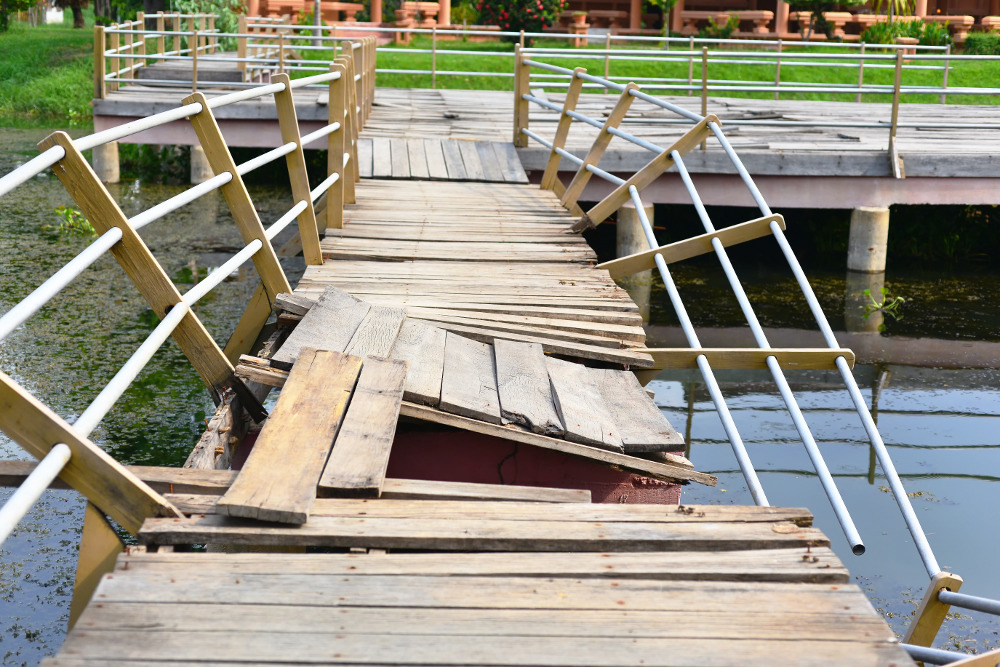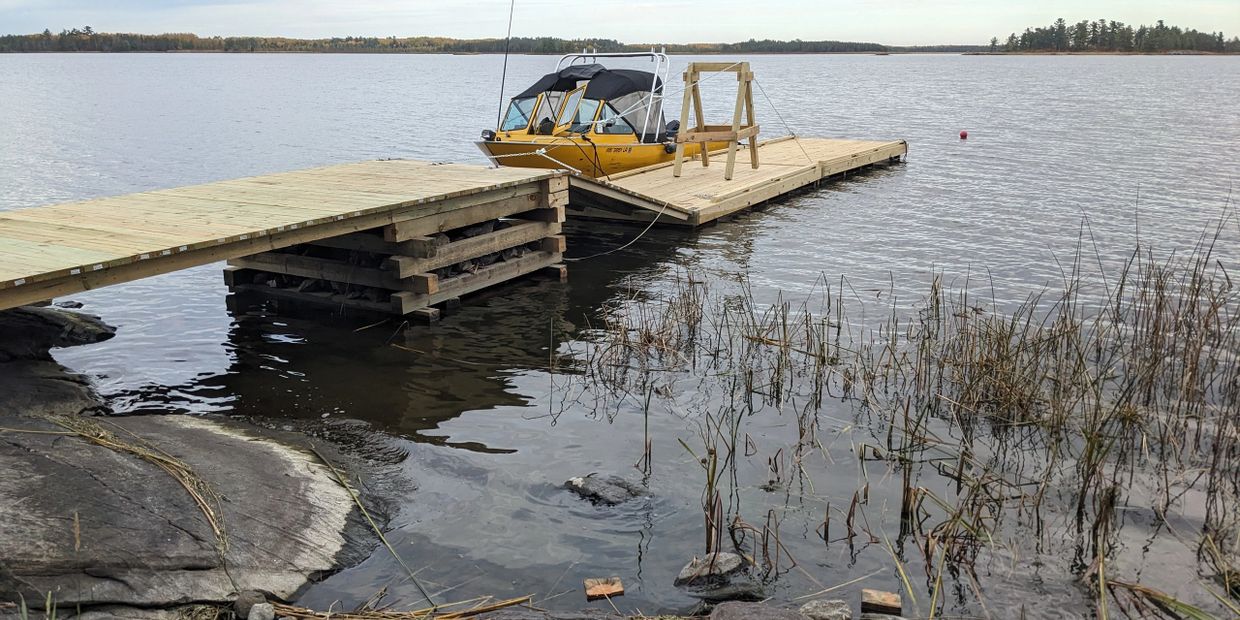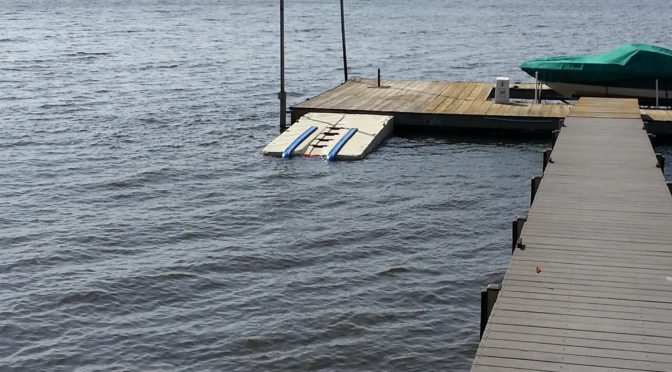Usual Concerns That Bring About Pricey Dock Repairs
Efficient Dock Fixing Techniques: Making Sure Structural Integrity
Making sure the structural stability of anchors with reliable repair work strategies is critical for the durability and safety of marine centers. Subsequently, choosing the appropriate repair work products, such as composite products and corrosion-resistant alloys, is critical for sturdiness.
Analyzing Dock Damage
Examining dock damages is a crucial initial step in guaranteeing the structural stability and safety and security of any docking facility. This preliminary analysis involves an extensive assessment to determine both hidden and visible damages. Secret elements to check out include the dock's foundation, pilings, outdoor decking, and hardware. Each component should be inspected for indications of wear, rot, rust, or various other kinds of destruction that could compromise the structural stability.
Architectural engineers or certified examiners commonly perform these assessments using specialized strategies and devices. As an example, underwater evaluations may employ finder tools or from another location operated vehicles (ROVs) to detect immersed damages. Over water, visual evaluations are complemented by using wetness meters and various other analysis tools to reveal underlying problems not right away noticeable to the nude eye.

Finding Repair Materials
Selecting the suitable repair service products is a critical action in the dock repair procedure, one that straight affects the durability and efficiency of the fixed structure. Material choice must be driven by elements such as environmental conditions, load-bearing requirements, and compatibility with existing dock components. Timber is a standard option for docks due to its natural resilience and visual allure. Choosing the appropriate type of wood, such as pressure-treated lumber or normally rot-resistant species like cedar or teak wood, is critical to stand up to marine settings.
In addition to timber, composite materials are increasingly preferred due to their durability and reduced maintenance needs. Composites, typically made from a mix of plastic and timber fibers, use excellent resistance to rot, bugs, and UV damage. For metal anchors, selecting corrosion-resistant alloys such as galvanized steel or marine-grade light weight aluminum is necessary to prevent corrosion and ensure structural honesty in saline water conditions.
Epoxy materials and marine-grade sealants are crucial for repairing fractures and securing joints, providing a water resistant obstacle and boosting the dock's total strength. By carefully choosing high-grade products, dock repair work can attain lasting results, therefore securing against future deterioration and making certain secure, trusted use.
Structural Reinforcement Strategies
Reliable architectural support methods are important in making certain the security and long life of dock repair services. This technique is particularly effective for anchors subjected to heavy loads or harsh ecological problems.
One more important technique is the application of fiber-reinforced polymers (FRP) These products use high strength-to-weight ratios and outstanding resistance to corrosion, making them excellent for enhancing concrete or wood anchors. FRP can be used in strips or sheets and adhered with epoxy materials to enhance architectural stability.
Bracing and securing systems also play an important role in structural support. Cross-bracing, utilizing steel or wooden beams, can combat lateral pressures, decreasing guiding and motion. Anchoring systems, such as helical piers or driven piles, supply a stable structure by moving loads to much deeper, a lot more steady soil layers.
Finally, the integration of load-distribution plates can assist disperse weight much more equally across the dock's surface area, mitigating local stress and anxiety points. These strategies collectively make sure that docks stay secure and robust, capable of holding up against the rigors of their functional setting.
Advanced Repair Work Techniques

One more sophisticated method includes underwater welding, which enables repair services to be performed without the demand to dewater the location. This technique is especially helpful for attending to architectural problems in submerged dock elements, guaranteeing minimal interruption to procedures. Improved welding methods, coupled with robot systems, supply accuracy and dependability, consequently prolonging the life expectancy of the dock.
Additionally, cathodic protection systems are implemented to avoid rust in metallic dock structures. By making use of sacrificial anodes or pleased present systems, these techniques effectively minimize the electrochemical procedures that bring about product wear and tear.
Lastly, advanced monitoring technologies, such as architectural health and wellness monitoring (SHM) systems, provide real-time information on the condition of dock frameworks. These systems allow positive upkeep and prompt next interventions, eventually guaranteeing the long-lasting structural why not try this out stability of the dock.
Maintenance and Prevention
Upkeep and prevention are fundamental principles that underpin the long life and security of dock structures. Routine inspections are extremely important, enabling very early detection of damage, potential weaknesses, and ecological impacts. An aggressive approach, entailing routine look for corrosion, rot, and structural changes, reduces expensive repairs and extends the dock's functional life.
Preventive procedures need to include using safety finishings to steel components to safeguard versus corrosion and using cured timber to resist decay. In addition, ensuring appropriate drainage and ventilation can stop water buildup, which is a common cause of structural deterioration. Including quality materials and adhering to maker standards throughout construction and repair service stages additionally play essential functions in improving longevity.

Training workers in dock maintenance finest methods guarantees constant application of safety nets. Leveraging technological developments, such as drones for assessments and sensors for real-time monitoring, can better improve maintenance initiatives. By prioritizing maintenance and avoidance, dock owners can ensure architectural stability, functional security, and cost-efficient monitoring over the dock's lifespan.
Conclusion
In final thought, keeping the structural stability of aquatic centers demands extensive dock fixing strategies. Advanced repair methods, combined with normal maintenance methods, make certain the dock continues to be operational and risk-free under varied ecological problems.
Ensuring the structural integrity of docks through efficient repair techniques is vital for the long life and safety and security of aquatic centers.Picking the ideal repair materials is a pivotal step in the dock remediation process, one that directly influences important link the longevity and performance of the fixed structure.Effective architectural support strategies are important in guaranteeing the security and longevity of dock repairs. By focusing on upkeep and prevention, dock proprietors can make sure architectural integrity, functional safety, and economical administration over the dock's life expectancy.
In verdict, keeping the architectural integrity of marine centers requires extensive dock repair work techniques.